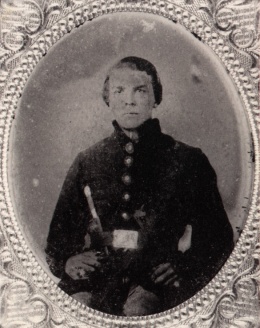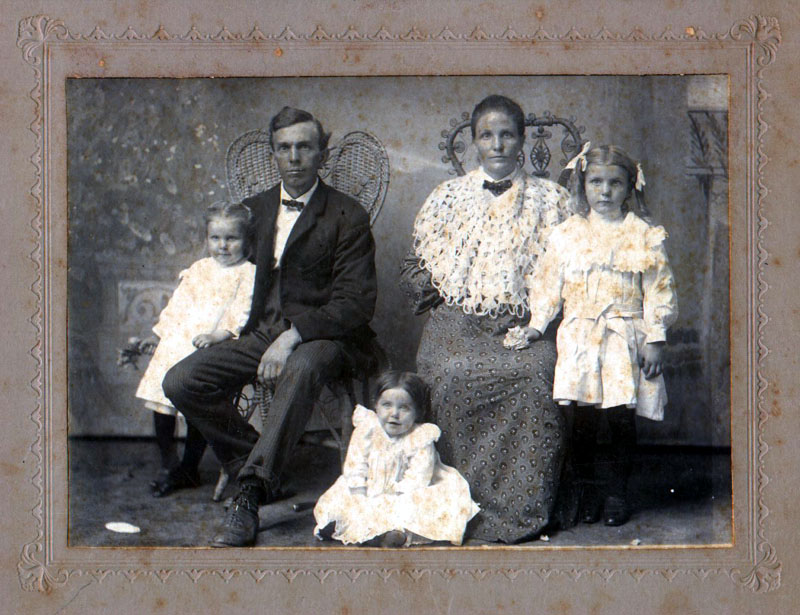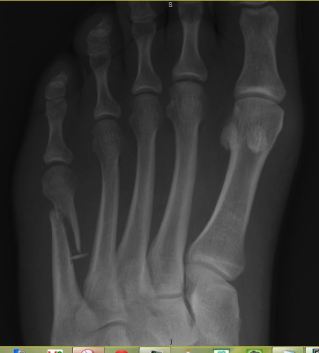
The beards are back. Well, at least the beards were back. I suggested to Kathleen that I ought to grow one and she strongly encouraged me to reconsider that idea. I thought I could do a pretty fair impression of Uncle Si, since I already carry around a big glass of iced tea.
When I saw that the theme for this week was Bearded, I immediately thought of my great-great-grandfather, Dr. Alonzo Dossey Wren. He could definitely have been at home with the guys of Duck Dynasty. He even lived near their home for many years.
Alonzo Dossey Wren was born 9 August 1841 in Putnam County, Georgia. He was the sixth of George Washington Wren and Sarah Bridges Wren’s children. You may recall George Washington Wren from a previous story about him and a Bible Dictionary he owned.
In 1850, the family appears in the census of Putnam County, but they did not remain there much longer. By 1851, the family had moved to Bienville Parish, Louisiana.
For many years, there has been confusion over this family. In the 1850 Census of Putnam County, Georgia, in the household of Geo. W. and Sarah Wren, there is a 9-year-old boy enumerated as Wm. A.D. Wren. There is also an 8-year-old boy named Monroe. No other record has been found for Monroe. And Alonzo Dossey Wren never appears as William Alonzo Dossey Wren. So, there is a mystery. Is William A.D. Wren really A.D. Wren? Maybe. But W.A.D. Wren has a tombstone (placed much later) that says he died in 1867. And the IGI lists William Alonzo Dossey Wren. So, who is whom? Really don’t know. I’ve heard lots of theories. Like William A.D. Wren was somehow handicapped and the family used the name again. That seems unlikely. Or that A.D. Wren was born Monroe and took the name A.D. Wren after his brother died. But, that doesn’t hold water either since by 1867 (William’s reputed death), A.D. Wren had already served in the Civil War and had married and started to make his own records. The only actual records I have seen that include William and Monroe are the census records for 1850 Putnam County, Georgia. And I am inclined to lean toward a sloppy census taker.

In any case, we don’t find the family in the 1860 census. G.W. Wren (A.D. Wren’s father) had purchased several tracts of land in Bienville Parish and the family was clearly residing there. And the 1860 census for Bienville Parish is missing.
Minden, in Bienville Parish, is only about an hour and a half drive (at most) from West Monroe, Louisiana, the home of Duck Dynasty. So, perhaps the seeds of the beard started here.
When the War came, A.D. Wren enlisted in the Claiborne Grays – Company D, 19th Regiment of Louisiana Infantry in December 1861. He and his unit served under General Joseph Johnson. They fought at Shiloh, Missionary Ridge, Chattanooga, Chickamauga, Resacca, and Atlanta. The unit was disbanded in May 1865 in Meridian, Mississippi.
In this picture, you can see A.D. Wren with his “Arkansas Toothpick”, the long, thin knife in his belt. The original of this photo is owned by my cousin, John Gann, of England, Arkansas. He has an amazing collection of artifacts not just from the family, but also from his time flying over Europe during WWII.
But, there’s no beard! As a young man, he’s not wearing is signature whiskers.
After the War, A.D. Wren moved a bit north into southwest Arkansas. In 1866, he married Frances Georgia “Georgia” Vickers, the daughter of James Jackson Vickers and Savannah Georgia Shehee. The Vickers family were early settlers in Florida. Georgia’s mother was born in Leon County, Florida in 1823, more than 20 years prior to statehood. By 1840, the family had moved north into south Georgia, Thomas County. And by 1850, they had moved into Bienville Parish. And by 1860, they had moved into Hempstead County, Arkansas.
Alonzo went to New Orleans to study medicine at the University of Louisiana, receiving a certificate for attending lectures there in 1871 and 1872. The University of Louisiana ultimately became Tulane University in New Orleans. This is a picture of him during his studies, taken at the studio of Petty & Quinn at 151 Canal Street in New Orleans. Very dapper looking, with a nicely trimmed beard this time.
I’ve not been able to find records yet of his time in New Orleans. By the time of this certificate, at least three children would have been born to the family. The eldest, a little girl named Savannah, died as an infant. I wonder if that helped shape Alonzo’s desire to study medicine.
In any case, he worked as a physician, while still working his own farm, for the rest of life, until his death in 1915. I wish I had asked my grandfather about him. But that wasn’t even something I thought about as a 10-12 year old boy.
I have a clock that he and Georgia gave to my great-grandparents as a wedding gift in 1899. My little brother has a pocket watch that Dr. Wren received as payment from a patient at some point.
As it turns out, Dr. Wren came by his beard legitimately. On the left, below, is is father, George Washington Wren. That’s one stern looking dude with a serious beard, I would say.
On the right is George Lovich Pierce Wren, Dr. Wren’s older brother. His is much more neatly trimmed. But, then, he was in the Louisiana legislature and had to clean up a bit, I suppose. Maybe we will talk about his experience in a later entry. His diary that he kept during his time at Emory University and during his service in the Civil War is kept in the Special Collections Room of the Emory University Library.
Here’s another of Dr. Wren as a young man. The photo on the left is a large format tintype. I believe it must date from about the time he was studying in New Orleans as well. The beard is still neat and short.
But, on the right, the beard is starting to take on a life of its own. This is the look that I have seen in so many photos. The very full beard shows up in all of the pictures of Dr. Wren until the end of his life.

This is one of my favorites. Dr. A.D. Wren and his wife Georgia, taken 26 December 1900 in Prescott, Arkansas, where the family lived for generations.

On 18 January 1916, Dr. Wren died at his daughter, Carrie Camillia Wren Woodul’s home. He and Georgia had moved into town to live with their daughter just thta year on account of their health. Georgia lived until 1941, and Carrie, Mrs. J.C. Woodul, lived until 1977.
The descendants of the beards — the descendants of Dr. A.D. Wren and George Lovich Pierce (GLP) Wren — have held family reunions since at least the 1940s. So, while neither the men, nor the women, of the Wren family have as extravagant beards as their ancestors, their memory lives on. Not just the memory of the beards, but the memory of the ancestors and their lives and stories. And that’s even better.
















 I have had it worked on a couple of times – cleaning, bushings replaced, a new spring – but it’s the same clock that has kept on ticking since it found its new home with Sam and Pearl in 1899. The last time I had it cleaned, I slipped coming down the stairs and broke my foot, but the clock didn’t get dropped and kept on running. Interestingly, I went ahead and took it to the clock repair place. I got a call to pick it up the day my foot came out of the cast.
I have had it worked on a couple of times – cleaning, bushings replaced, a new spring – but it’s the same clock that has kept on ticking since it found its new home with Sam and Pearl in 1899. The last time I had it cleaned, I slipped coming down the stairs and broke my foot, but the clock didn’t get dropped and kept on running. Interestingly, I went ahead and took it to the clock repair place. I got a call to pick it up the day my foot came out of the cast.